Meet the Lo-Vs
Lo-V cars were manufactured from 1916 to 1925 and served mostly on the IRT Lexington Avenue Express (today’s 4 and 5 trains) and the IRT 7th Avenue – Bronx Park Express (today’s 2 and 3 trains). The last Lo-V cars served the Third Avenue Elevated in The Bronx and were retired in 1969.
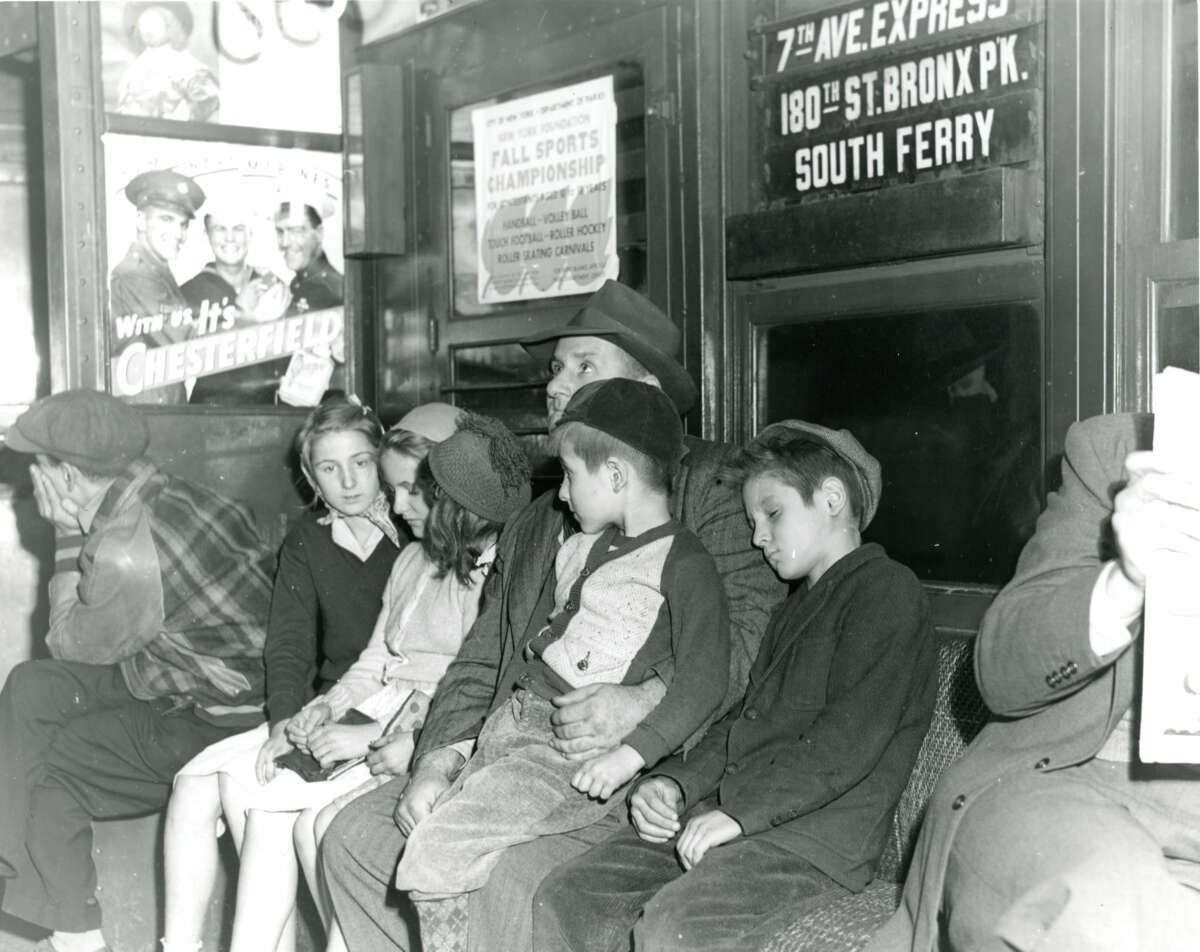
Children riding a Lo-V, c. 1943
New York Transit Museum Subway Photo Essay Collection
GT-28
Where have I seen a Lo-V before?
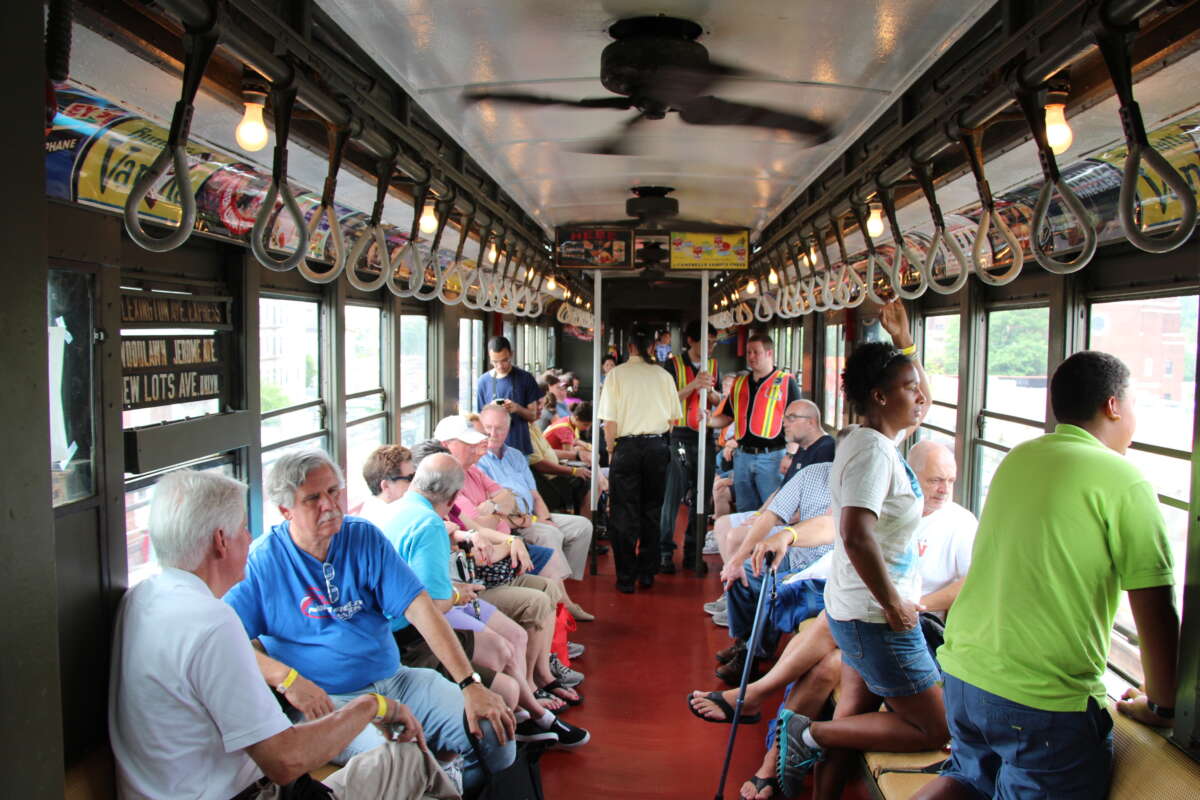
Lo-V in nostalgia service, 2013
Photograph by James Giovan
In addition to being a beloved train on New York Transit Museum nostalgia rides (especially to Yankee Stadium), Lo-Vs had their star turn in several movies. King Kong menaced a Lo-V full of passengers in 1933. The Incident, from 1967 (Martin Sheen’s film debut!) took place on a Lo-V wending its way through The Bronx.
Why are they called Lo-Vs?
The first all-steel subway cars used by Interborough Rapid Transit (IRT) were called “Gibbs” cars, named for the IRT’s chief engineer, George Gibbs. These – along with several other early car types were eventually termed “Hi-V” cars, after the 600 volts needed to power and control the propulsion system. All subway cars have wheels with motors in them, called “trucks” which have contact shoes that touch the third rail and deliver power to the “group box”. The group box controls acceleration in the trucks’ motors according to the signals it receives from the master controller. A master controller is an electromechanical device, located at the front of a train, that a train operator uses to regulate direction and speed.
In a Hi-V car, this voltage was passed from the third rail contact shoes directly through a train’s master controller to each individual car’s propulsion control system. It was also based between each car – called “trainlining”. This meant that if one of the contact shoes in a Hi-V car was not touching the third rail, there was still 600 volts of current being delivered to it from the other cars it was coupled to. This was achieved by connecting each rail car via a jumper cable. This also meant that high voltages were being passed directly through the master controller in the train operator’s cab.
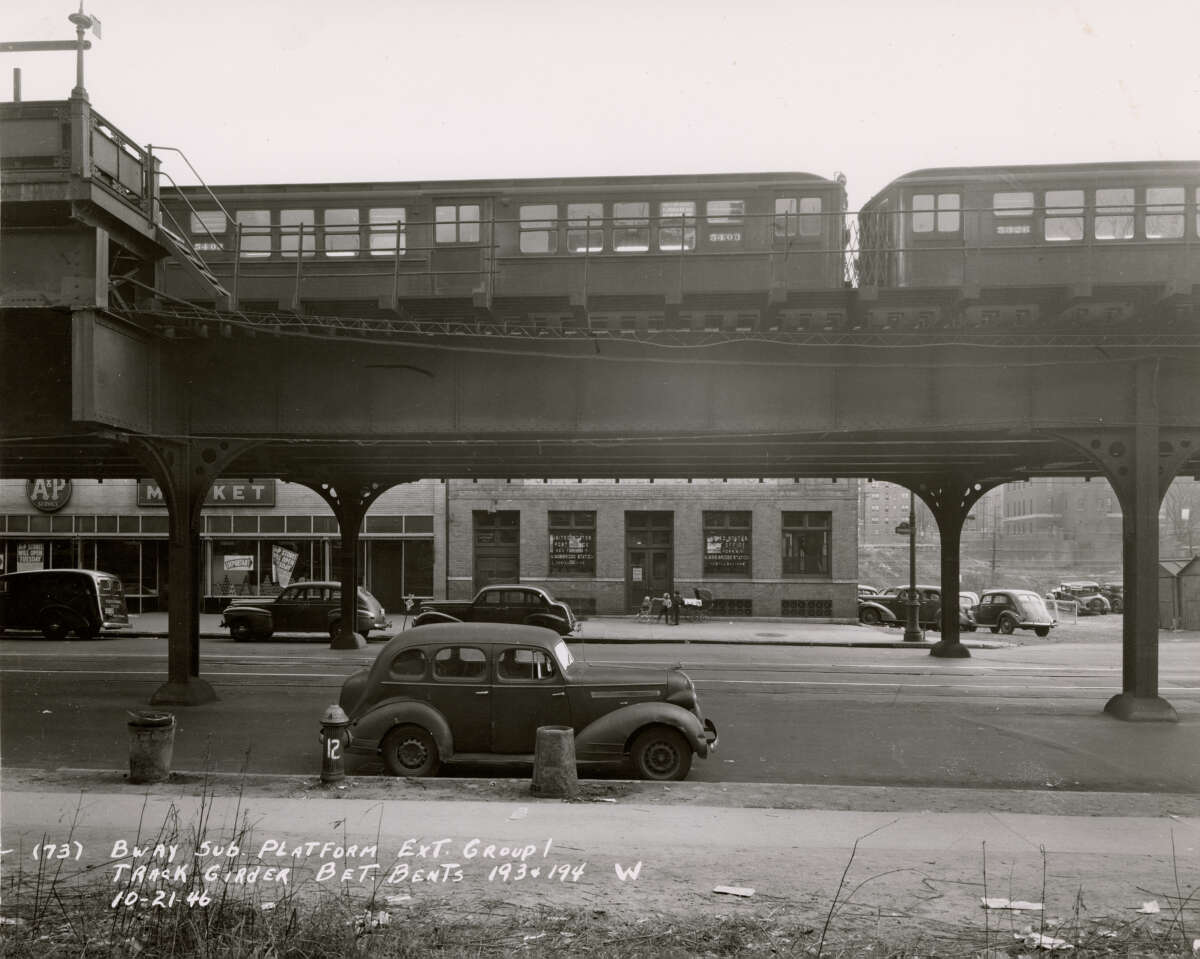
Lo-V cars in The Bronx, 1946
New York Transit Museum Subway Construction Photograph Collection
R1S16_73
The design of Lo-V cars eliminated the need for high voltage jumper cables between cars, and instead used battery voltage (32 volts) to control the propulsion systems in each car, which in turn modulated the voltage being supplied to the motors for acceleration.
This was an improvement in safety for crews in service as well as in the yards. However, once the IRT began ordering cars with the Lo-V configuration, this essentially split the fleet into two sets of rail cars that were not compatible with each other. The high voltage connection between all third rail shoes on Hi-V trains necessitated special signaling equipment and procedures to prevent trains from accidentally energizing sections of track that were powered down.
Hi-V cars, and the associated operational considerations needed to accommodate them, were retired in 1958. The Lo-Vs remained in service until the 1960s.
How many kinds of Lo-V cars are there?
There were four kinds of Lo-V cars: the Standard Lo-V, the Flivver Lo-V, the Steinway Lo-V, and the World’s Fair Lo-V. There were 1,386 Lo-V cars in total:
- Standard Lo-V cars were built by three companies: Pressed Steel Car Company, American Car and Foundry, and the Pullman Company from 1916 to 1925. There were 725 motor cars and 295 trailer cars.
- Flivver Lo-Vs were built by the Pullman Company in 1915, and the name “Flivver” comes from a slang term of the time that was used to describe a small car that gave a bumpy ride . There were 178 Flivvers.
- Steinway Lo-V cars were built by three companies: Pressed Steel Car Company, American Car and Foundry, and the Pullman Company from 1915 to 1925. There were 138 Steinways built, all motor cars.
- There were only 50 World’s Fair Lo-V cars. These were built by the St. Louis Car company for service during the 1939 World’s Fair on the IRT Flushing Line.
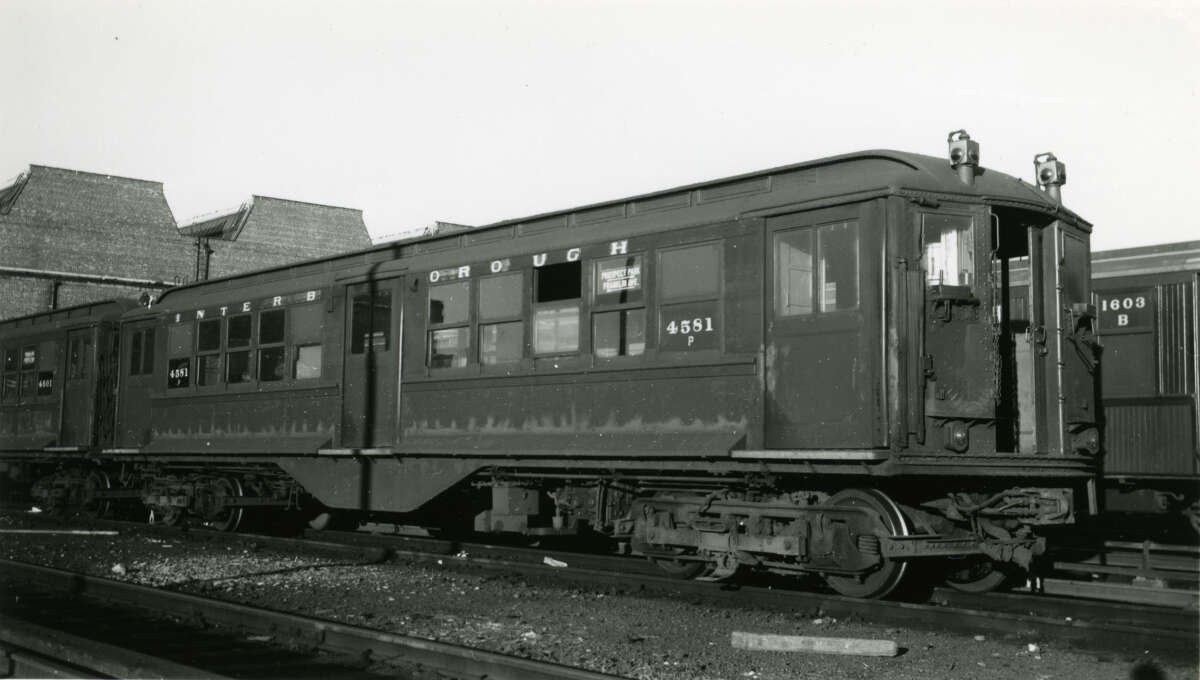
Standard Lo-V cars at the Coney Island Yard, 1960
New York Transit Museum Lonto / Watson Collection
2010.20.13.13.37
Why were there different kinds of Lo-Vs?
As the needs of the subway system changed, elements of the subway cars that ran in it changed as well. Multiple batches of Lo-Vs were ordered from 1916 to 1938. Some of the changes to the Lo-V cars were cosmetic, and some were crucial mechanical changes to ensure smooth operation.
The Steinway and World’s Fair Lo-V cars are an example of mechanical changes made to ensure smooth operation.
The Steinway Tunnels were originally intended to have trolley service run through them. They were built by the New York and Long Island Rail Road Company between Lexington Avenue and 42nd Street in Manhattan and Van Alst Avenue (now known as 21st Street) in Long Island City.
In April of 1913, New York City became the owner of the Steinway Tunnels, and the IRT was chosen to operate the subway line that would serve it – the IRT Corona Line (later Flushing Line). In order to get the tunnels in service quickly, they were reconfigured for rapid transit by removing the catenary wire and trolley wayside equipment.
One thing that could not be changed quickly or inexpensively is the grade of the tunnel. Grade is the angle at which a tunnel differs from a flat horizontal surface. The bigger the number, the higher the grade. Higher grades are more difficult for subway cars to move over. The Steinway Tunnels, because they were not built for rail cars, have a steeper grade than those tunnels specifically constructed for subway service.
The Steinway Lo-V cars had a lower weight (about 74,000 pounds) and a higher gear ratio to move through the grade more efficiently. A higher gear ratio provides more acceleration to “cruise” a vehicle, whereas a lower gear ratio provides more torque to get a vehicle moving from a resting position. They were also the first cars to have the low-voltage motor control. World’s Fair Lo-Vs were built specifically to increase capacity for the 1939 World’s Fair.
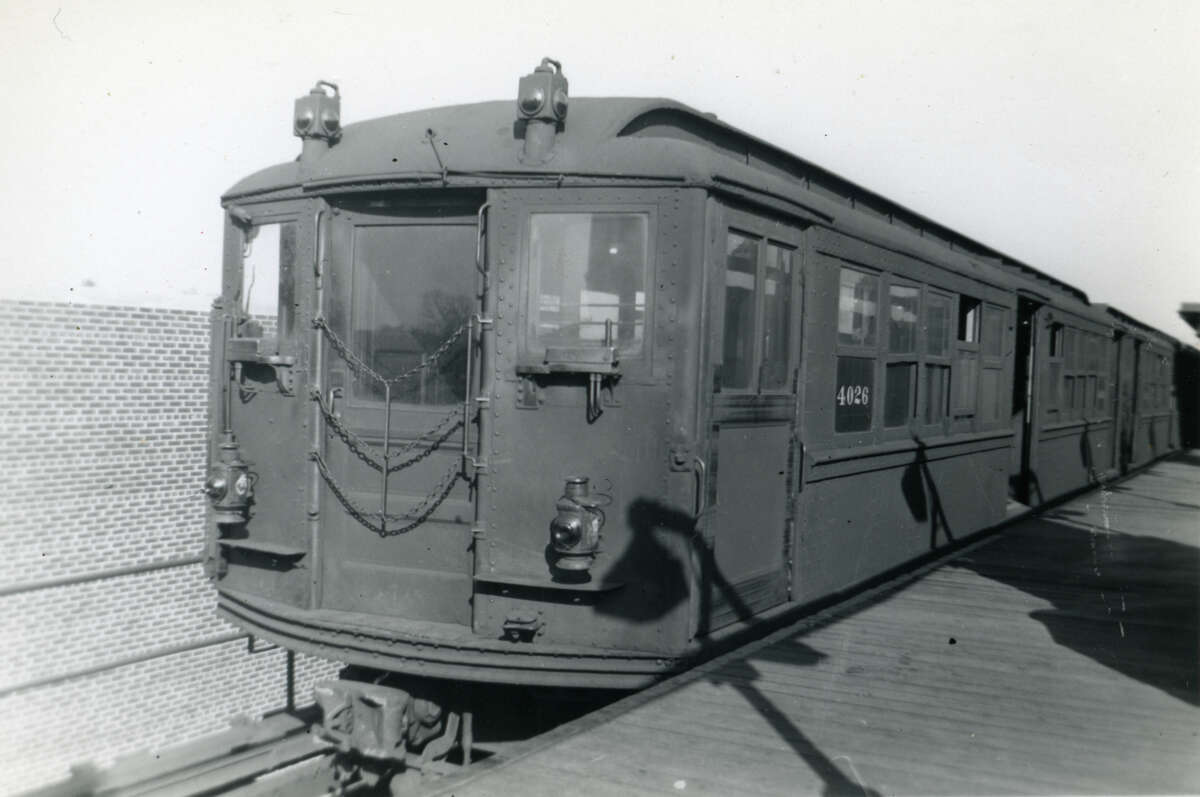
Steinway Lo-V at New Lots Avenue, Brooklyn, 1951
New York Transit Museum Lonto / Watson Collection
2010.20.13.11.2
These cars served mostly the IRT Flushing Line and the BMT Astoria Line until 1950, at which point they were transferred over to the IRT Broadway – 7th Avenue Line. Because they served Queens, they had special gear ratios so they could overcome the steep 4.5% grade in the Steinway Tunnel.
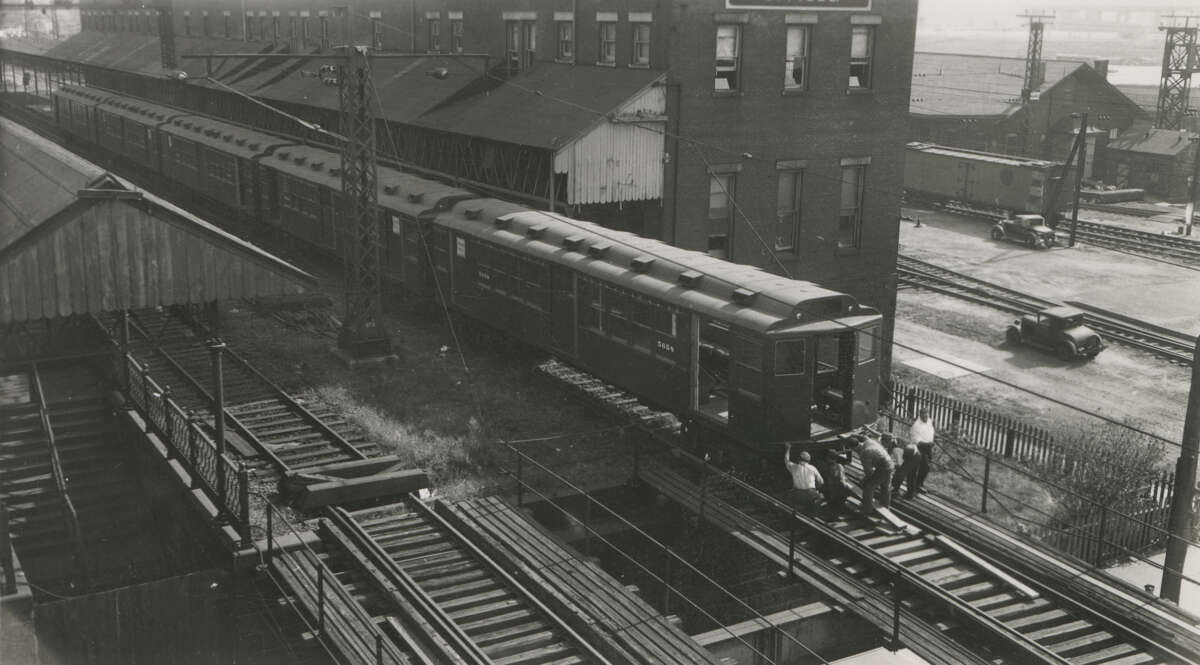
World’s Fair Lo-V cars arriving at the Harlem Yard, 1938
New York Transit Museum Lonto / Watson Collection
2010.20.13.20.1
Operationally, World’s Fair Lo-Vs were the same as the Steinway cars but were cosmetically different: they had an ogee-styled roof (ogee is the name given to a double curve that is a combination of two semicircular arcs that can resemble an “S”) and no vestibules. The last of the World’s Fair Lo-V cars were retired in 1969.
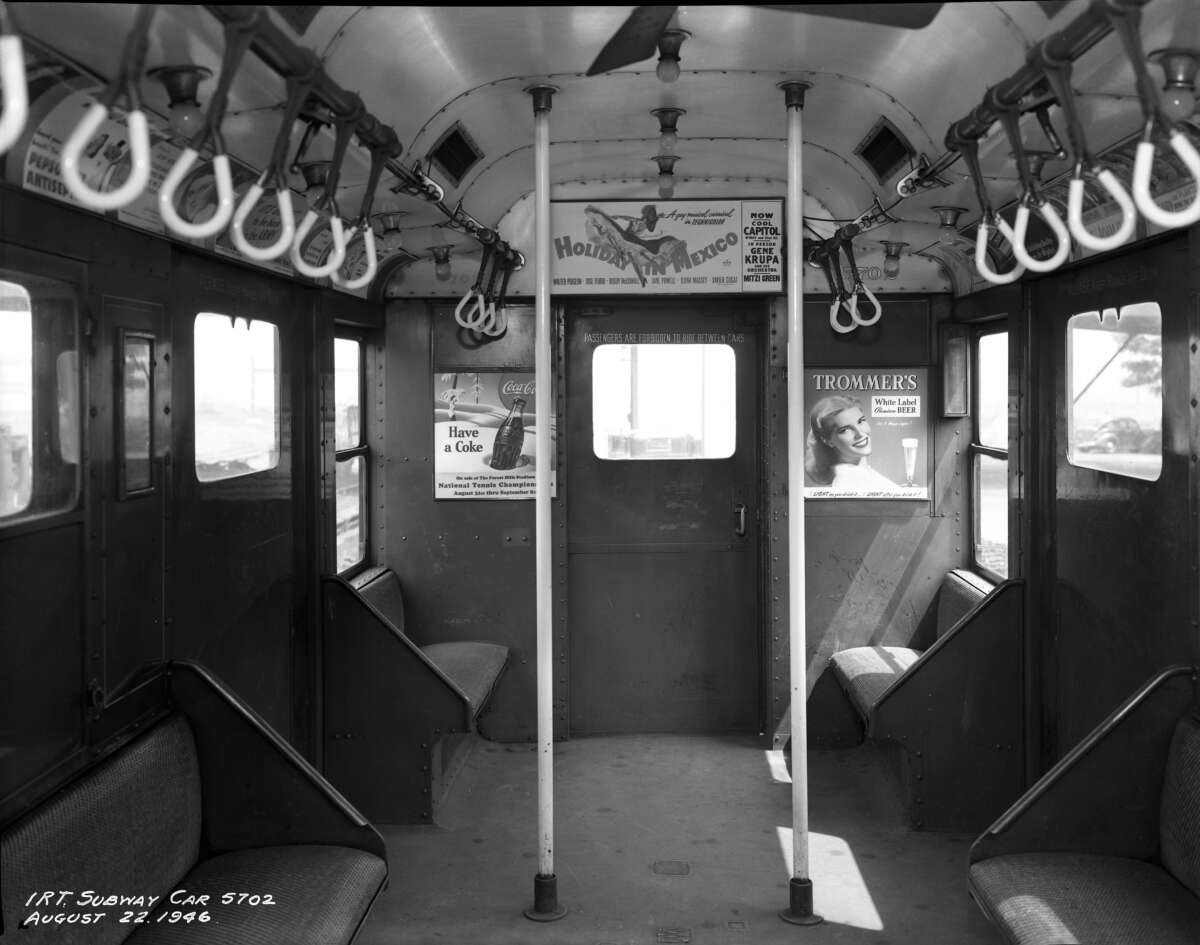
Interior of car #5702, 1946
New York Transit Museum Lundin Collection
2004.20.11.101
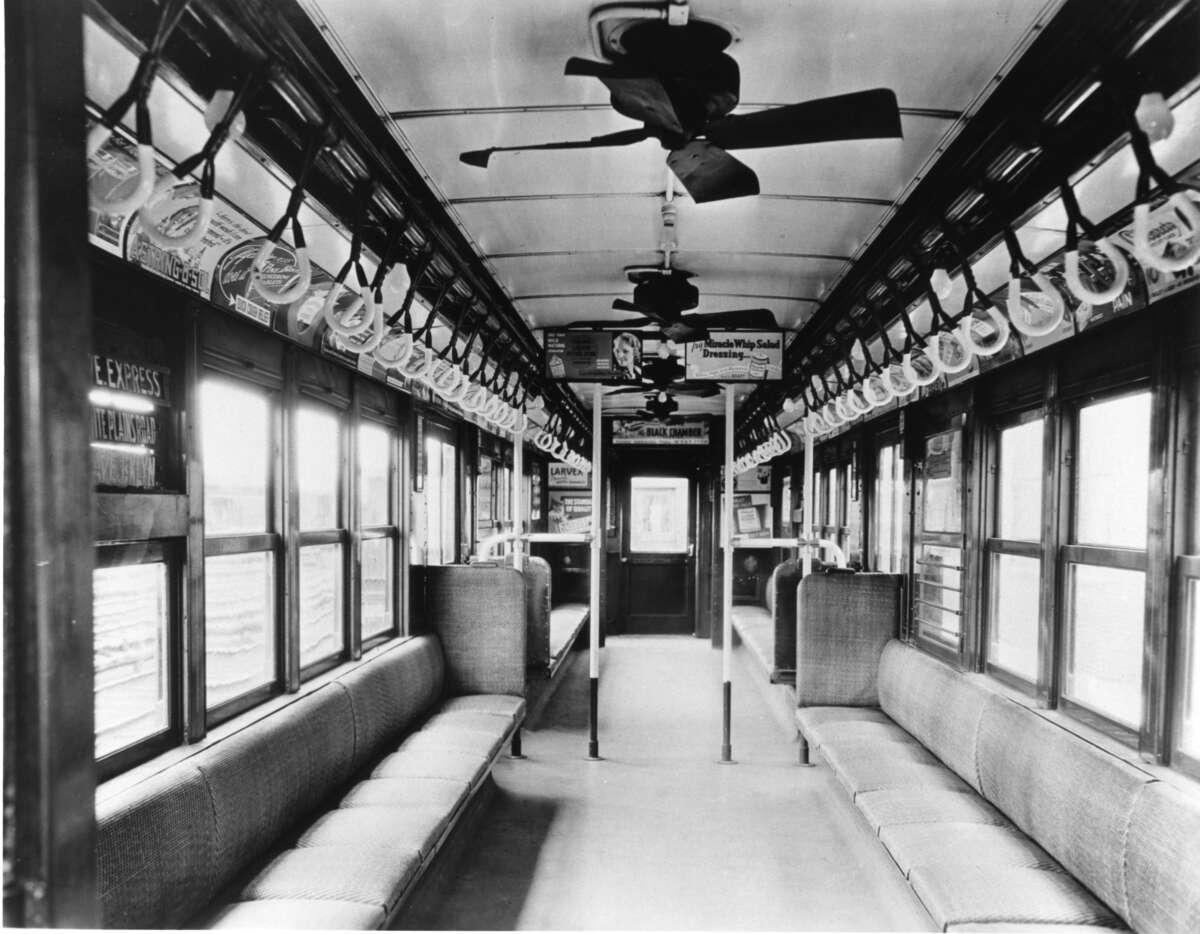
Interior of a Standard Lo-V, 1924
New York Transit Museum Vincent Lee Collection
2005.61.96
What happened to the Lo-Vs?
As the 1960s approached, New York’s subway fleet was showing its age. Plans were put in place to replace the oldest cars with newer ones. In 1958, the IRT ordered 210 cars that were intended to replace the Hi-V and Lo-V cars – some of which had been rolling for 54 years. These new cars entered service in 1959, kicking off the biggest fleet replacement ever done by the NYCTA. In 1961, another 1200 cars were ordered, and when they filtered into service in 1962, the Lo-Vs began to disappear. The Flivvers were the first to leave, and in 1964 most of the remaining Lo-Vs were retired. In 1969, the very last Lo-Vs left the system.
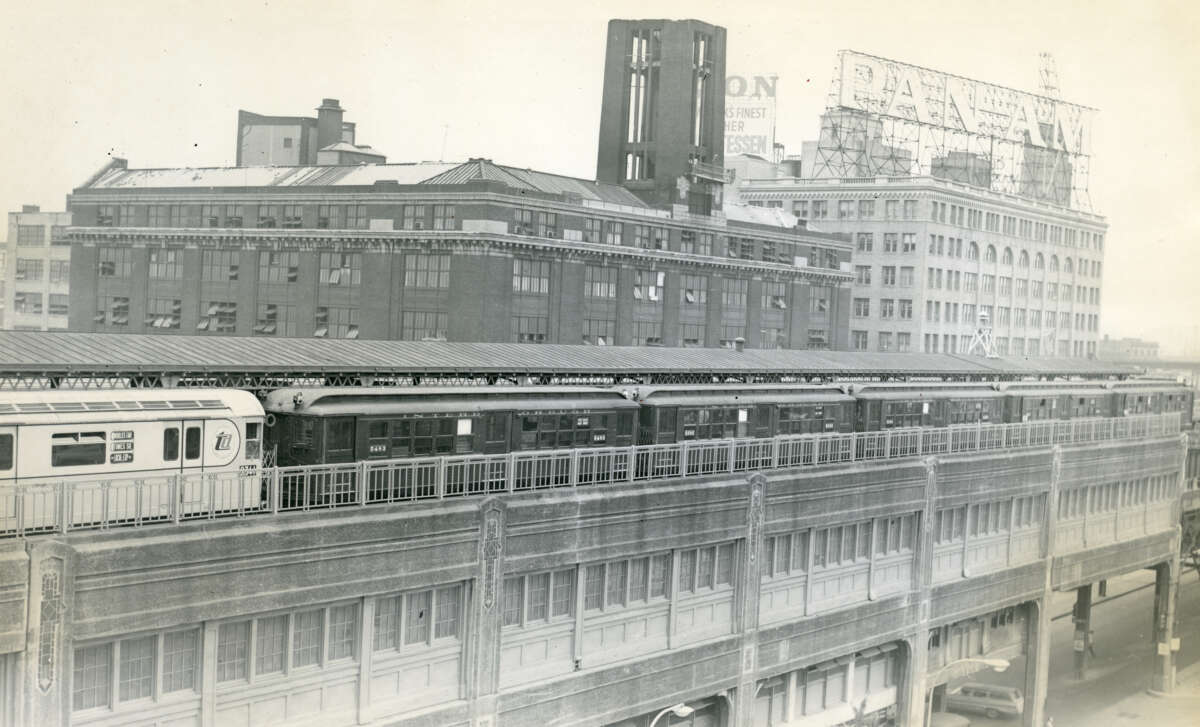
Lo-Vs and R-33s at Queensboro Plaza, 1965
New York Transit Museum Lonto / Watson Collection
2010.20.13.18.16
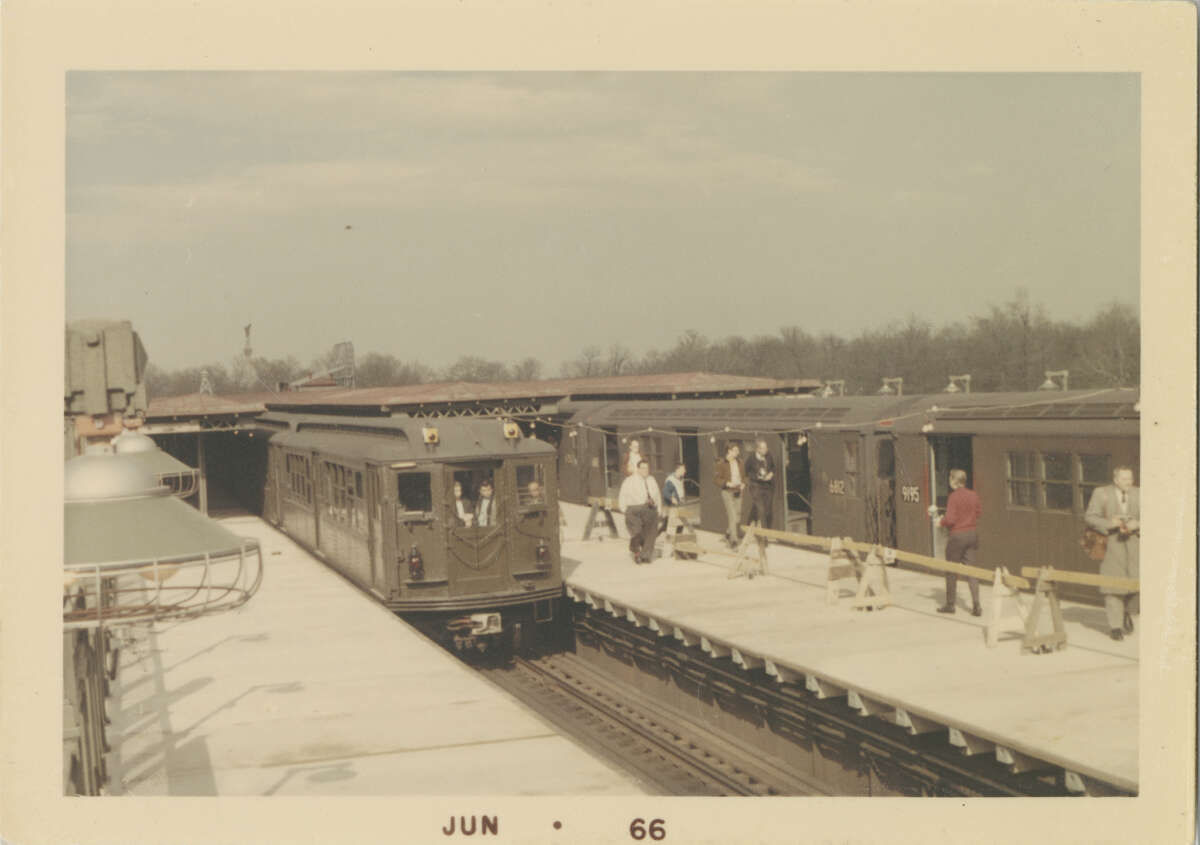
Lo-V cars in The Bronx, 1966
New York Transit Museum Lonto / Watson Collection
2010.20.13.21.4
How many Lo-Vs are left?
After the Lo-V cars were retired, many went into work service. The remainder were scrapped. Once it was decided to replace the Lo-Vs in work service with newer cars, many of those were scrapped as well. Today, less than 10 Lo-V cars remain – and 6 of them are part of the NYTM fleet!
How does the NYTM preserve these trains?
Like people, each train car is different, even if they are the same car type. A team of NYTM volunteers works closely with Car Equipment and other NYCTA departments to prepare our fleet for Nostalgia Rides and other events.
Each car that is in service at one of these events has undergone the same safety testing as any other subway car in revenue service.
The Museum and the restoration team discuss what cars will be restored to which era — some are restored to a specific year, and others to a specific decade.
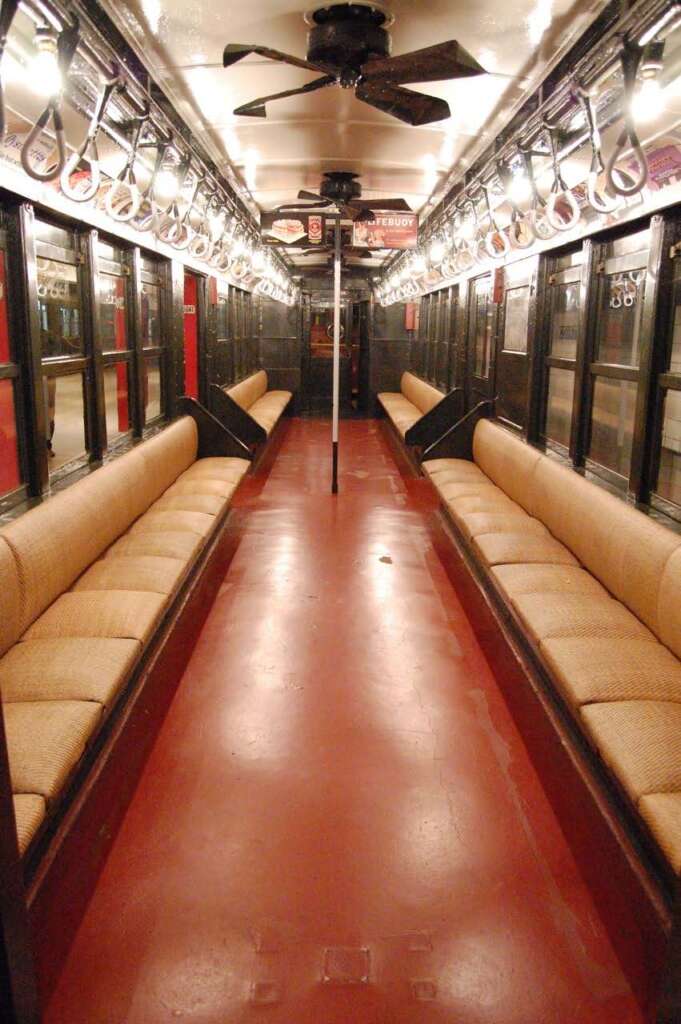
Lo-V interior, 2012
Photograph by Patrick Cashin
The Lo-V fleet cars are not restored to any particular year, but the ads in each car reflect a specific decade in which the car ran. This means that in one car you will see ads from the mid-teens, and in another you may see ads from the 1940s.
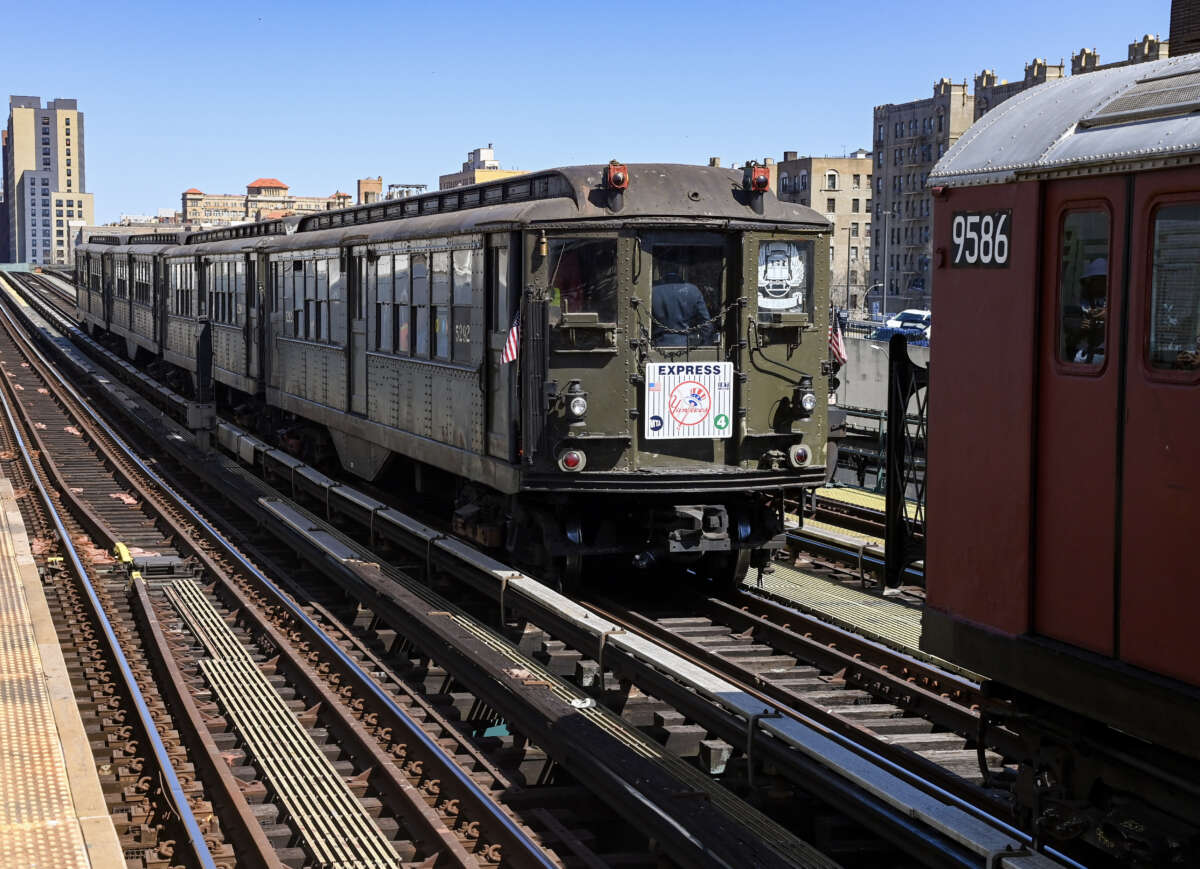
Yankees home opener nostalgia ride, 2023
Photograph by Marc A. Hermann

